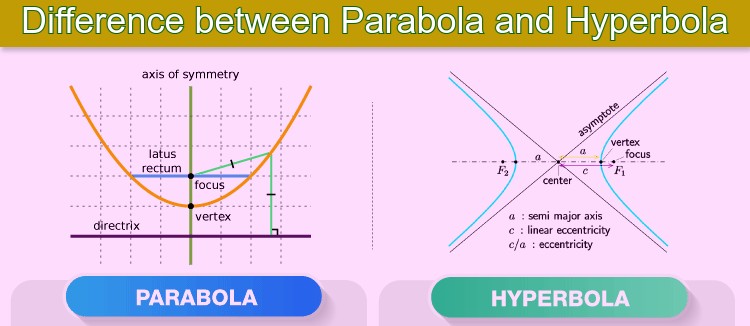Definition of Parabola and Hyperbola
A parabola is a symmetrical U-shaped curve. It is created by the intersection of a plane with a cone when the plane is parallel to one of the cone’s sides. In mathematics, a parabola is defined as the set of all points in a plane that are equidistant from a fixed point and a fixed-line.
A hyperbola is a symmetrical curve. It is created by the intersection of a plane with a double cone. In mathematics, a hyperbola is the set of all points in a plane such that the difference between the distances to two fixed points is constant. The two branches of a hyperbola are mirror images of each other. They are asymptotic to two lines called asymptotes.
What is the difference between Parabola and Hyperbola?
The main difference between a parabola and a hyperbola is their shape and the way they are explain.
| Parabola | Hyperbola | |
|---|---|---|
| Shape | U-shaped curve | Symmetrical curve with two branches |
| Formation | Intersection of a plane with a cone parallel to one of its sides | Intersection of a plane with a double cone |
| Definition | All points on the curve are equidistant from a fixed point (focus) and a fixed line (directrix) | All points on the curve have a constant difference between the distances to two fixed points (foci) |
| Foci and Asymptotes | One focus and one directrix | Two foci and two asymptotes |
| Symmetry | Symmetric with respect to its axis of symmetry, which is perpendicular to its directrix | Symmetric with respect to its center |
| Equation | y = ax^2 or x = ay^2 | (x – h)^2/a^2 – (y – k)^2/b^2 = 1 or (y – k)^2/a^2 – (x – h)^2/b^2 = 1 |

